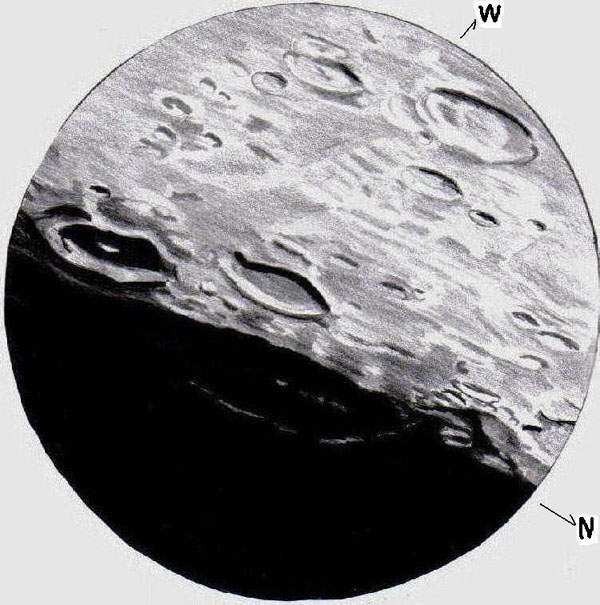At one day past full moon old luna was arching it’s way to the high point for the
night when I selected for my sketching target craters along the terminator on the
eastern side of the moon. Six craters larger than 45 kilometers in diameter are
included in this sketch. With only the highest points along the western rim being
touched by sun rays, it is sundown at crater Gauss. With Gauss measuring 177 km.
in diameter it is categorized as a walled plain crater and dates back to the
Nectarian age (3.9-3.8 billion years ago). Southwest of Gauss with the floor in
darkness except for the illuminated central peak we have crater Hahn, a formation
slightly younger than Gauss and smaller at 84 km. To the north of Hahn is a crater
of the same age as Gauss known as Berosus. It measures 77 km in diameter and its
western wall is not as high as that of its partner Hahn. The largest crater on the
western side of the sketch is Geminus at 86 km. It has a low central peak and no
crater rays, although it is the youngest of the craters in the sketch at about 2 billion
years of age. The smaller crater close to Geminus to the east is 47 km. crater
Bernoulli. And finally to the south of Geminus is crater Burckhardt at 57 km. in
diameter with small craters straddling it to the southeast and southwest.
Sketching: Graphite 2H pencils and India ink on
White 8.5”x11” copy paper
Telescope: 10” f/5.7 Dobsonian 6mm eyepiece
Time: 10-8-2006, 5:30-6:30 UT
Colongitude: 101.6°
Weather: clear, calm
Seeing : Antoniadi III
Frank McCabe


Another fine sketch Frank. What is more, it’s an education to read your comments. Keep it up.
Reminds me of what a nice target the moon is – as a declared Deep Sky Observer, I have my problems with it, nevertheless, it’s always a nice treat to have a look at it!
Sebastian
Gerry,
Thank you. We need to see more of you beautiful sketches here.
Sebastian,
Thanks, and remember the time around full moon is for deep sky observation planning.
Frank